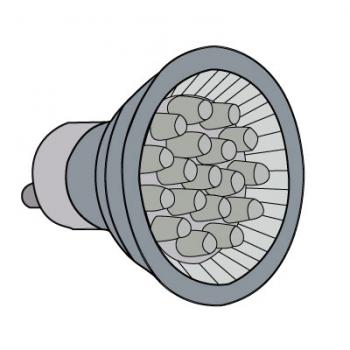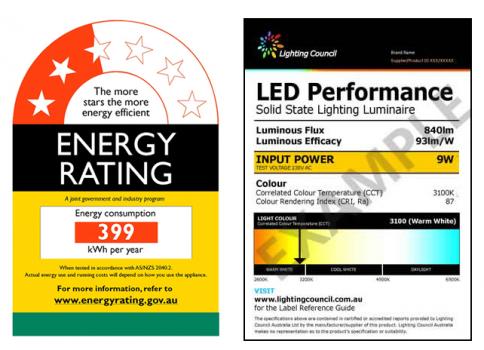
With the phase out of incandescent bulbs well underway, the uptake of energy efficient lighting has been gaining momentum. Now, efficient alternatives based on light emitting diode (LED) technology are becoming readily available for most interior and exterior applications. LED globes, also referred to as 'solid state lighting', consume far less power than most other forms of light globes and are capable of a great deal in terms of colour reproduction, but also come with their own performance issues. LED lights are typically directional, and although predominantly popular as a replacement for halogen downlights, are available for a number of different mounts and purposes.
How LED globes work
LEDs were first developed in the 1920s and until recently were found predominantly in limited, low-wattage applications such as indicator lights on small electrical devices. They differ significantly from traditional light sources in the way they produce light. In an incandescent lamp, electric current heats a tungsten filament until it emits light. An LED, in contrast, is a semiconductor diode, consisting of a chip of semiconducting material specially treated to create a structure called a p-n (positive-negative) junction. The specific colour emitted by the LED depends on the materials used to make the diode.
LEDs as a replacement for incandescents
The emergence of LEDs as one of the most popular replacement choices for incandescent globes is largely due to their performance. LEDs will only light with positive electrical polarity, they produce considerably more light per watt than incandescent bulbs, and they don’t contain mercury like compact fluorescent lamps (CFLs) do. LED globes are touted by many in the government and industry to be the ideal replacement for incandescents.
LEDs are already a widely used light source in the medical, defence, photography and hospitality industries (along with many others). LED globe manufacturers have dramatically improved the light output and quality of electronics used in LED lighting recently, as well as improving beam angles, which have traditionally been an issue for LED globes. These substantial improvements have further increased the demand for LED lighting technology.

Pound-for-pound wattage
As with any emerging technology, there are still issues that need to be addressed with LED globes. One issue in particular for LED globes is communicating their difference in wattage from incandescents. Another is the variations in light output (and the measurement of that important factor) between different globes and manufacturers. There is no single, direct replacement for a standard 60W incandescent globe available for the same fitting. Manufacturers are working to ensure that clear replacement options are available for all standard light fittings though.
There are some excellent LED products available in the Australian marketplace, and we should be excited about the technology’s potential, but it’s important that buyers also be wary of the extravagant claims made by some suppliers. The Lighting Council of Australia has developed a quality assurance label for LEDs, which provides people with a clear, standardised indication of the globe’s light output and capabilities. Looking for this quality assurance label will help to ensure that you get the quality of product that you pay for.
Long life
The other massive drawcard for LED globe technology is the incredibly long rated lifespan. Because LEDs generally fade rather than just dying altogether, this 'rated lifespan' is typically taken as the time by which the light is only able to produce 70% of its original rated brightness. Testing has shown that some LEDs can last upwards of 50,000 hours, with some even rated to 100,000 hours (and will continue to work well beyond this time, albeit not as brightly).
It’s important when buying LEDs to recognise this and factor it directly into the cost of the globe. LED globes are significantly more expensive to buy, but cheaper operating costs and longer lifespan can easily offset this added cost over the lifetime of the globe.
GU10, MR16 and voltage
LED globes are usually sold with one of two different types of globe mounts. The first is the 240 Volt GU10 mounting. Globes with these mountings can run directly off mains supply, which is 240V in Australia. MR16 type globes, on the other hand, are 12 Volt globes, and require a step-down transformer to convert the mains supply voltage to the 12V that's needed to run the globes.





